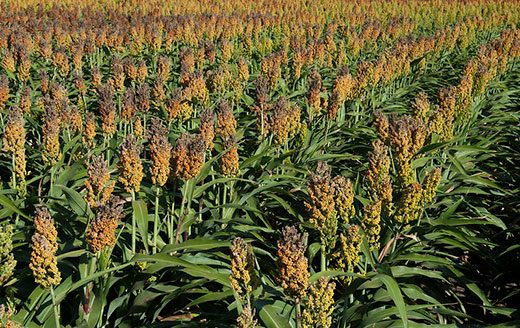University of Missouri Extension and the Missouri Department of Agriculture are helping livestock producers find hay.
Their websites are seeing increased interest from buyers and sellers post-drought, says Tony Hancock, MDA market news manager.
Many of the listings come from sellers in states that have not seen back-to-back drought years. “They are aware of our situation,” Hancock says. MDA listings are at https://apps.mda.mo.gov/HayDirectory.
Listings give detailed information to help buyers find hay for their operations, says MU Extension agricultural economist Ryan Milhollin, who works with MU’s Agricultural Electronic Bulletin Board (AgEBB). MU hay listings are at http://agebb.missouri.edu/haylst/vsale.php.
The websites list sellers by region and forage type, as well as bale type, number and weight. Details may include whether the hay has been analyzed, crude protein, acid detergent fiber, neutral detergent fiber, relative feed value and percent total digestible nutrients.
Buyers may also find notes such as “First cutting” or “Don’t call before 6 p.m.”
Hay listings on the MDA website will be posted for up to six months. Listings on MU AgEBB remain in the market listing system for 60 days unless updated. AgEBB lists the most recent postings first.
MU Extension and MDA have listed hay market information online for more than three decades, and the websites complement each other as easy-to-use tools to help producers, says John Travlos, system administrator for MU AgEBB.
Milhollin says livestock producers also may find AgEBB’s byproduct feed price listing helpful to find soy hulls, corn gluten feed and other byproducts. Find the byproduct feed price listing at http://agebb.missouri.edu/dairy/byprod/listing.php.
Use caution when buying hay from new sources, says MU Extension agronomy specialist Tim Schnakenberg.
Varying sizes, densities and, most importantly, quality affect hay’s true value, says Schnakenberg. When buying, ask how hay was stored and for how long.
More tips from Schnakenberg:
• Test and weigh hay before buying, if possible. Many MU Extension centers lend hay probes for pulling hay tests. The best way to tell good hay from bad is to have it tested for quality in a laboratory.
• Look for leafiness, weeds and seed heads. Mature seed heads are a sign of an overmature crop. Check for mold and smell. Weeds often transfer in a drought from one farm to another, so look for thistle, poison hemlock, spiny pigweed or Johnson grass seed heads.
• Check for fire ants and other pests in hay from states where these pests are common. See the MU Extension news release “Detecting and Controlling Red Imported Fire Ants” at http://muext.us/n1522 for more information.
• Buy by the ton, not the bale.
• Test for nitrates.
Hay containing Sudan grass, millet or Johnson grass can have nitrate toxins when harvested during dry conditions. Nitrates in the hay remain at the same levels as when baled; nitrate levels in hay made into haylage may be reduced 20%-50%. Some extension centers can do quick tests, but Schnakenberg recommends using a laboratory for more accurate results.




